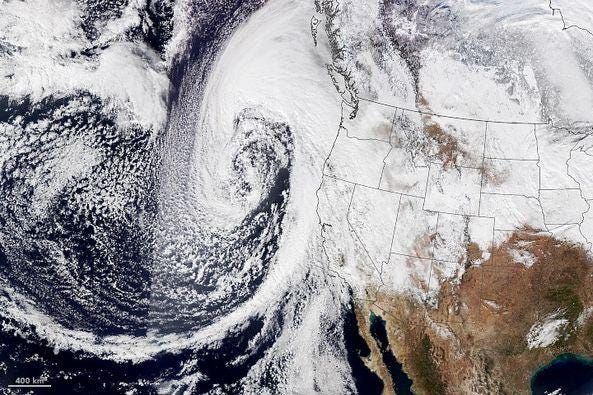A series of “atmospheric rivers” have been impacting California over the past week. Such storms are common in this region during the cold season. Atmospheric rivers can be quite devastating from the perspective of flood-producing rainfall and extreme winds. However, they can also serve as “drought-relief.” According to federal agencies, 30 to 50% of total precipitation (rain and snow) in the western United States is produced by atmospheric river-related storms. While perhaps an unfamiliar term to many folks in the media and general public, scientists have known about them for some time. Unfortunately like the term “Polar Vortex,” atmospheric rivers have been mischaracterized in the media and many public narratives.
I tried to ignore it, but the atmospheric scientist in me could not let it go as I continued to see atmospheric rivers in mainstream outlets referred to as “firehoses, plumes or funnels” of rainfall. It reminded me of the times when people described the Polar Vortex as some type of Arctic hurricane. With the reach of traditional and social media, long-standing meteorological terms like Polar Vortex, derecho, bomb cyclone, and atmospheric river have entered the public lexicon. Inevitably, some of them have been mischaracterized.
Support authors and subscribe to content
This is premium stuff. Subscribe to read the entire article.











